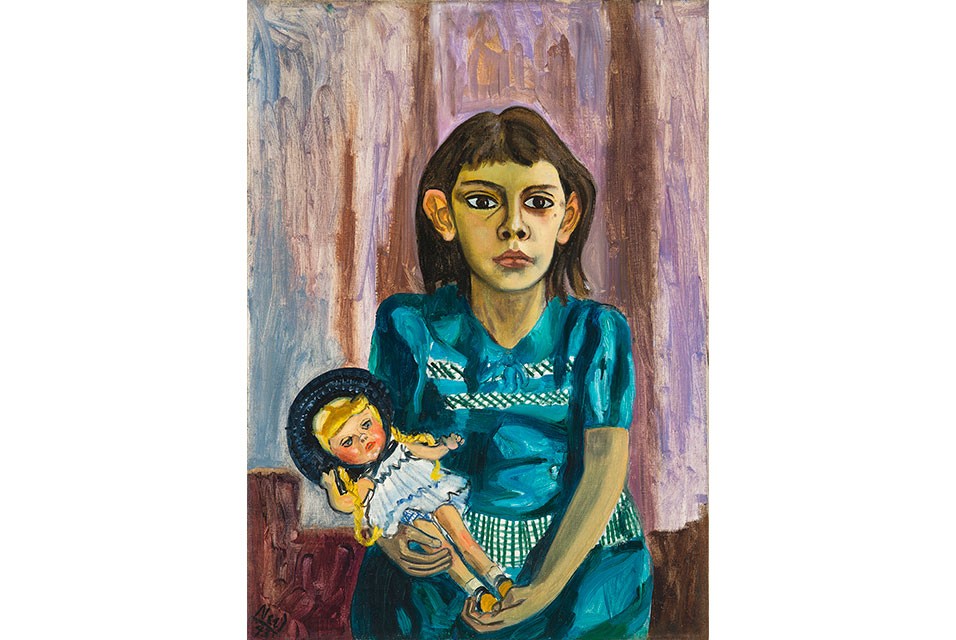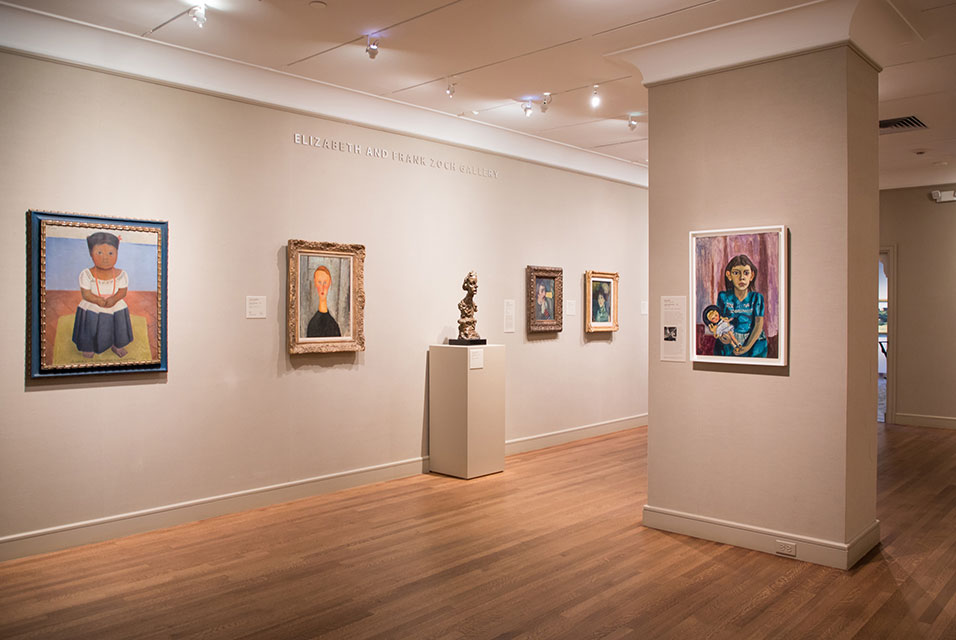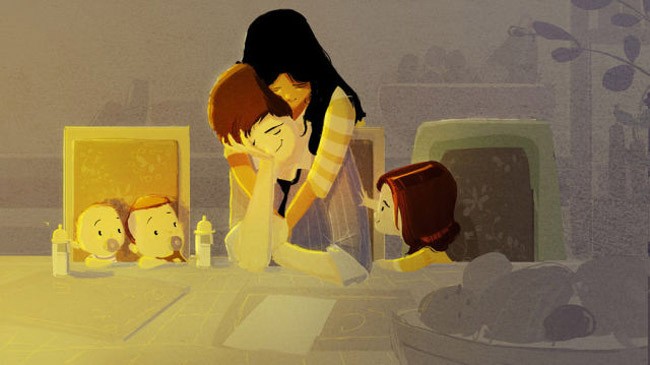Yesterday the Board of Trustees of the McNay Art Museum announced a major acquisition of a portrait by Alice Neel.
Julie and the Doll depicts a slight Hispanic girl with large brown eyes cradling a blond, blue-eyed doll as she looks beyond the viewer. The 1943 painting illustrates the racial divide experienced daily by the residents of New York City’s Spanish Harlem, an uptown neighborhood the artist called home for twenty-four years.
“We all seek images of ourselves —or people who look like us— on museum walls as proof that we are meant to be here, that this place is for someone like us,” said Richard Aste, the McNay’s first Hispanic director. “This portrait helps us truly lean into our mission of engaging a diverse community by mirroring our own diverse community, San Antonio being over 60 percent Hispanic.”

“The McNay exists because of the vision of a woman artist, Marion Koogler McNay. And while the McNay collection is rich in works by women artists, a significant example by Alice Neel was, until now, an obvious omission,” adds Rene Paul Barilleaux, Head of Curatorial Affairs. “The acquisition of Julie and the Doll further assists the Museum in presenting a more authentic story of modern art that embraces both representation and abstraction.”
The McNay purchased the portrait from Victoria Miro Gallery with funds provided by the Ralph A. Anderson Jr. Memorial Fund and the Alvin Whitley Estate. The work comes directly from the Estate of Alice Neel.
Neel was born in Merion Square, Pennsylvania in 1900. She studied at the Philadelphia School of Design for Women (now Moore College of Art & Design) before moving to New York City where she became part of the bohemian milieu in Greenwich Village. During the Great Depression Neel found employment painting urban scenes for the Works Progress Administration (WPA). In 1938, she moved uptown to Spanish Harlem where she found new inspiration in the people of her community, among them Julie. By World War II, Neel was defined by her expressionistic portraits of family, lovers, and neighbors.
The Whitney Museum of American Art presented the first retrospective of Neel’s work in 1974. Subsequent retrospectives were organized by the Philadelphia Museum of Art (2001) and the Museum of Fine Arts, Houston (2010). Today her work is represented in major museum collections around the world, including the Metropolitan Museum of Art in New York, Tate Modern in London, and now the McNay in San Antonio.

























